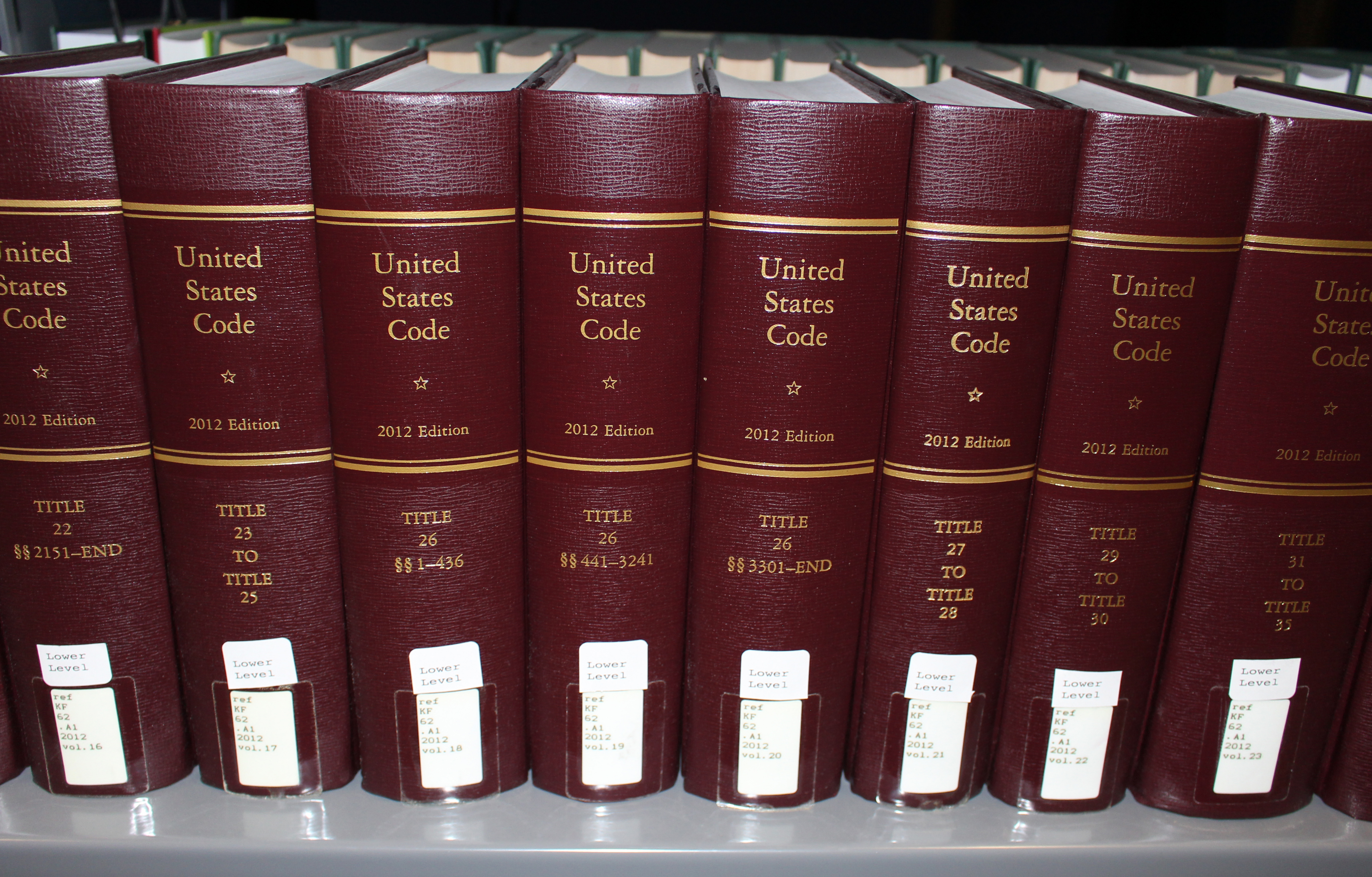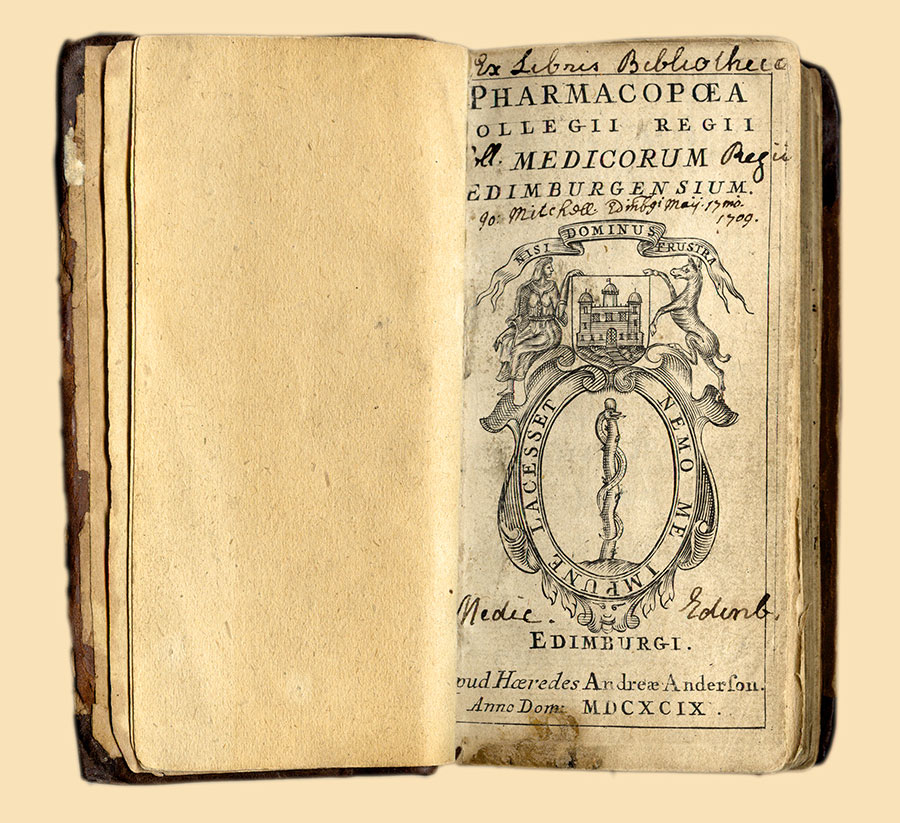|
United States Pharmacopeia
The ''United States Pharmacopeia'' (''USP'') is a pharmacopeia (compendium of drug information) for the United States published annually by the over 200-year old United States Pharmacopeial Convention (usually also called the USP), a nonprofit organization that owns the trademark and also owns the copyright on the pharmacopeia itself. The ''USP'' is published in a combined volume with the ''National Formulary'' (a formulary) as the USP-NF. If a drug ingredient or drug product has an applicable ''USP'' quality standard (in the form of a ''USP-NF'' monograph), it must conform in order to use the designation "USP" or "NF". Drugs subject to ''USP'' standards include both human drugs ( prescription, over-the-counter, or otherwise) and animal drugs. ''USP-NF'' standards also have a role in US federal law; a drug or drug ingredient with a name recognized in ''USP-NF'' is considered adulterated if it does not satisfy compendial standards for strength, quality, or purity. USP also ... [...More Info...] [...Related Items...] OR: [Wikipedia] [Google] [Baidu] |
Nonprofit
A nonprofit organization (NPO), also known as a nonbusiness entity, nonprofit institution, not-for-profit organization, or simply a nonprofit, is a non-governmental (private) legal entity organized and operated for a collective, public, or social benefit, as opposed to an entity that operates as a business aiming to generate a Profit (accounting), profit for its owners. A nonprofit organization is subject to the non-distribution constraint: any revenues that exceed expenses must be committed to the organization's purpose, not taken by private parties. Depending on the local laws, charities are regularly organized as non-profits. A host of organizations may be non-profit, including some political organizations, schools, hospitals, business associations, churches, foundations, social clubs, and consumer cooperatives. Nonprofit entities may seek approval from governments to be Tax exemption, tax-exempt, and some may also qualify to receive tax-deductible contributions, but an enti ... [...More Info...] [...Related Items...] OR: [Wikipedia] [Google] [Baidu] |
United States Code
The United States Code (formally The Code of Laws of the United States of America) is the official Codification (law), codification of the general and permanent Law of the United States#Federal law, federal statutes of the United States. It contains 53 titles, which are organized into numbered sections. The U.S. Code is published by the United States House of Representatives, U.S. House of Representatives' Office of the Law Revision Counsel. New editions are published every six years, with cumulative supplements issued each year.About United States Code . Gpo.gov. Retrieved on 2013-07-19. The official version of these laws appears in the ''United States Statutes at Large'', a chronological, uncodified compilation. Codification Process The official text of an Act of Cong ...[...More Info...] [...Related Items...] OR: [Wikipedia] [Google] [Baidu] |
Pharmacopoeia Of The People's Republic Of China
A pharmacopoeia, pharmacopeia, or pharmacopoea (or the typographically obsolete rendering, ''pharmacopœia''), meaning "drug-making", in its modern technical sense, is a reference work containing directions for the identification of compound medicines. These are published or sanctioned by a government or a medical or pharmaceutical society, giving the work legal authority within a specified jurisdiction. In a broader sense it is a collection of pharmaceutical drug specifications. Descriptions of the individual preparations are called monographs. Etymology The term derives from "making of (healing) medicine, drug-making", a compound of "medicine, drug, poison" (), with the verb "to make" (), and the abstract noun suffix -ία ''-ia''. In early modern editions of Latin texts, the Greek diphthong οι (''oi'') is latinized to its Latin equivalent ''oe'' which is in turn written with the ligature ''œ'', giving the spelling ''pharmacopœia''; in modern UK English, ''œ'' is wri ... [...More Info...] [...Related Items...] OR: [Wikipedia] [Google] [Baidu] |
Japanese Pharmacopoeia
The is the official pharmacopoeia of Japan. It is published by the . The first edition was published on 25 June 1886, with revisions being issued from time to time. The current revision is number 18, issued electronically on 7 June 2021. An official English translation is in preparation (status: 06 Aug 2021). See also * '' The International Pharmacopoeia'' * Japanese Accepted Name A (JAN) is the official non-proprietary or generic name given to a pharmaceutical substance by the Government of Japan. See also * International Nonproprietary Name (INN) * United States Adopted Name (USAN) * British Approved Name (BAN) * ... References Pharmacopoeias Pharmacy in Japan {{japan-lit-stub ja:薬局方#日本薬局方 ... [...More Info...] [...Related Items...] OR: [Wikipedia] [Google] [Baidu] |
European Pharmacopoeia
The ''European Pharmacopoeia'' (''Pharmacopoeia Europaea'', ''Ph. Eur.'') is a major regional pharmacopoeia which provides common quality standards throughout the pharmaceutical industry in Europe to control the quality of Pharmaceutical drug, medicines, and the substances used to Pharmaceutical manufacturing, manufacture them. It is a published collection of monographs which describe both the individual and general quality standards for ingredients, dosage forms, and methods of Pharmaceutical engineering, analysis for medicines. These standards apply to medicines for both Medicine, human and Veterinary medicine, veterinary use. Legal basis The ''European Pharmacopoeia'' has a Contract, legally binding character. It is used as an official reference to serve public health, and is part of the regulatory requirements for obtaining a Marketing Authorisation (MA) for a medicinal (human or veterinary) product. The quality standards of the European Pharmacopoeia apply throughout the ... [...More Info...] [...Related Items...] OR: [Wikipedia] [Google] [Baidu] |
British Pharmacopoeia
The ''British Pharmacopoeia'' (''BP'') is the national pharmacopoeia of the United Kingdom. It is an annually published collection of quality standards for medicinal substances in the UK, which is used by individuals and organisations involved in pharmaceutical research, development, manufacture and testing. Pharmacopoeial standards are publicly available and legally enforceable standards of quality for medicinal products and their constituents. The ''British Pharmacopoeia'' is an important statutory component in the control of medicines, which complements and assists the licensing and inspection processes of the UK's Medicines and Healthcare products Regulatory Agency (MHRA). Together with the ''British National Formulary'' (BNF), the ''British Pharmacopoeia'' defines the UK's pharmaceutical standards. Pharmacopoeial standards are compliance requirements; that is, they provide the means for an independent judgement as to the overall quality of an article, and apply throug ... [...More Info...] [...Related Items...] OR: [Wikipedia] [Google] [Baidu] |
Chemical Purity
In chemistry, chemical purity is the measurement of the amount of impurities found in a sample. Several grades of purity are used by the scientific, pharmaceutical, and industrial communities. Some of the commonly used grades of purity include: * ACS grade is the highest level of purity, and meets the standards set by the American Chemical Society (ACS). The official descriptions of the ACS levels of purity is documented in the '' Reagent Chemicals'' publication, issued by the ACS. It is suitable for food and laboratory uses. * Reagent grade is almost as stringent as the ACS grade. * USP grade meets the purity levels set by the United States Pharmacopeia The ''United States Pharmacopeia'' (''USP'') is a pharmacopeia (compendium of drug information) for the United States published annually by the over 200-year old United States Pharmacopeial Convention (usually also called the USP), a nonprofi ... (USP). USP grade is equivalent to the ACS grade for many drugs. * NF g ... [...More Info...] [...Related Items...] OR: [Wikipedia] [Google] [Baidu] |
ASEAN
The Association of Southeast Asian Nations, commonly abbreviated as ASEAN, is a regional grouping of 10 states in Southeast Asia "that aims to promote economic and security cooperation among its ten members." Together, its member states represent a population of more than 600 million people and land area of over . The bloc generated a purchasing power parity (PPP) gross domestic product (GDP) of around trillion in 2022, constituting approximately 6.5% of global GDP (PPP). ASEAN member states include some of the fastest growing economies in the world, and the institution plays an integral role in East Asian regionalism. The primary objectives of ASEAN, as stated by the association, are "to accelerate economic growth, social progress and cultural development in the region", and "to promote regional peace and stability through abiding respect for justice and the rule of law in the relationship among countries in the region and adherence to the principles of the United Nation ... [...More Info...] [...Related Items...] OR: [Wikipedia] [Google] [Baidu] |
United States Agency For International Development
The United States Agency for International Development (USAID) is an agency of the United States government that has been responsible for administering civilian foreign aid and development assistance. Established in 1961 and reorganized in 1998, USAID has implemented programs in global health, disaster relief, socioeconomic development, education, environmental protection, and democratic governance. With average annual disbursements of about $23 billion since 2001, USAID has been one of the world's largest aid agencies and accounts for most U.S. foreign assistance — the highest in the world in absolute dollar terms — with missions in over 100 countries, primarily in Africa, Asia, Latin America, the Middle East, and Eastern Europe. The Trump administration is attempting to fully close the agency, pending several court cases. In early March, Secretary of State Marco Rubio announced that 83% of USAID programs would be cancelled. In late March, USAID executive Jeremy Lewin a ... [...More Info...] [...Related Items...] OR: [Wikipedia] [Google] [Baidu] |
Formulary (pharmacy)
A formulary is a list of pharmaceutical drugs, often decided upon by a group of people, for various reasons such as insurance coverage or use at a medical facility. Traditionally, a formulary contained a collection of formulas for the compounding and testing of medication (a resource closer to what would be referred to as a pharmacopoeia today). Today, the main function of a prescription formulary is to specify particular medications that are approved to be prescribed at a particular hospital, in a particular health system, or under a particular health insurance policy. The development of prescription formularies is based on evaluations of efficacy, safety, and cost-effectiveness of drugs. Depending on the individual formulary, it may also contain additional clinical information, such as side effects, contraindications, and doses. By the turn of the millennium, 156 countries had national or provincial essential medicines lists and 135 countries had national treatment. Australia ... [...More Info...] [...Related Items...] OR: [Wikipedia] [Google] [Baidu] |
Institute Of Medicine
The National Academy of Medicine (NAM), known as the Institute of Medicine (IoM) until 2015, is an American nonprofit, non-governmental organization. The National Academy of Medicine is a part of the National Academies of Sciences, Engineering, and Medicine, along with the National Academy of Sciences (NAS), National Academy of Engineering (NAE), and the National Academies of Sciences, Engineering, and Medicine (NASEM). Operating outside the framework of the U.S. federal government, it relies on a volunteer workforce of scientists and other experts, operating under a formal peer-review system. As a national academy, the organization annually elects new members with the help of its current members; the election is based on the members' distinguished and continuing achievements in a relevant field as well as for their willingness to participate actively. History The institute was founded in 1970, under the congressional charter of the National Academy of Sciences as the Instit ... [...More Info...] [...Related Items...] OR: [Wikipedia] [Google] [Baidu] |




